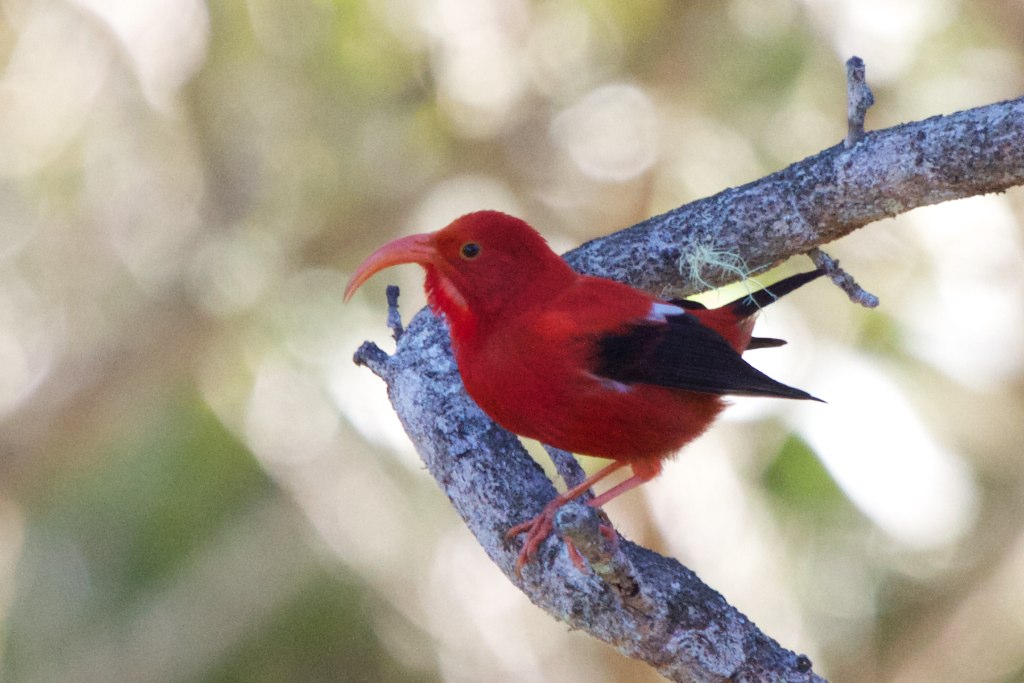Hawaii’s ‘I’iwi — brilliantly scarlet songbirds native to the islands — is one of several bird species in danger of being wiped out due to climate change and pests such as rats and mosquitoes, recent research has discovered.
These small, cardinal-like birds belong to a family called Hawaiian honeycreepers, which can only be found in the archipelago. They came from a historic line of finches that arrived in Hawaii some 7.2 to 5.8 million years ago, The Verge reports. The songbirds found new habitats as volcanic activity created more islands for them to live in, and began adapting to the food sources in the way of snails, seeds or nectar.
The ‘I’iwi, for example, have developed a specialized, curved straw-like beak for sipping nectar.
The unique environment on the Hawaiian islands gave birth to over 50 honeycreeper species, but today, only 18 remain. Of these 18 species, six on the island of Kauai are perilously close to extinction within the next ten years, according to a study.
Lisa “Cali” Crampton, a co-author on the study and a project leader on the Kaua’i Forest Bird Recovery Project, calls the findings “worrisome.” She says,
This study showed us two things: one, that the ones we already knew were in trouble were in even worse trouble than we thought.
The island ecosystems have isolated the songbirds, giving them nowhere to go when predators and pests attack. Mosquitoes arrived in the 1800s, and while they had previously bred in the cooler regions of Kauai, global warming has pushed the blood-sucking insects higher up, bringing with them deadly diseases like avian pox.
Protecting Hawaii’s birds from harm means more than just keeping them from disappearing. It also entails controlling pests and bugs, spreading seeds and pollinating plants in the birds’ natural habitats.
Aside from mosquitoes, there is the problem of rats. People brought the rodents with them on their arrival in Hawaii, and the rats eat honeycreeper eggs as well as female birds.
Crampton and her colleagues are fighting a desperate battle. For one songbird species, only 468 birds are alive in the wild. For another, there are less than a thousand left. Crampton’s team collects eggs from honeycreeper species to hatch them in safety. Their goal is to set up a captive breeding population that will serve as the backup plan if ever disaster wipes out all the honeycreepers in the wild. The researchers have also placed around 300 rat traps where honeycreepers nest.
More needs to be done, however, especially in controlling mosquito-borne diseases. Climate change seems to be a phenomenon that no one can stop, but with the efforts of people like Crampton, perhaps small steps can lead to bigger ones in saving Hawaii’s diverse wildlife populations.
The study was published in the journal Science Advances.
























